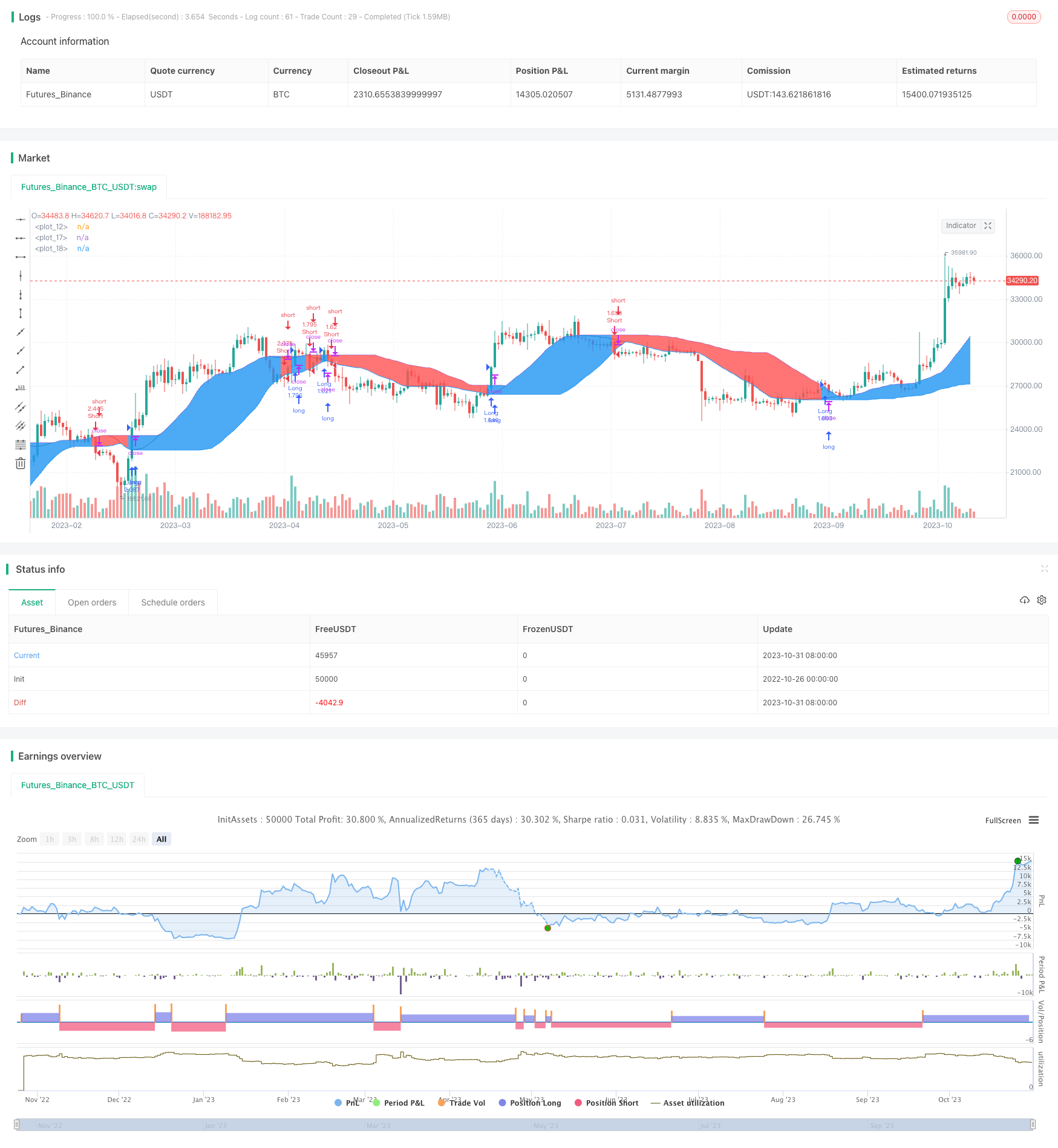
概述
均线带趋势策略(Moving Average Ribbon Trend Strategy)是一个基于移动平均线的趋势跟踪策略。它使用单一均线构建价格通道,根据价格相对通道的位置来判断趋势方向并进行交易。该策略适用于趋势较明显的市场,可捕捉较长周期的价格趋势。
策略原理
该策略通过计算指定周期长度(默认20周期)的简单移动平均线,并以其值构建价格通道。通道的上轨和下轨分别为均线的最高值和最低值。如果收盘价高于上轨,则判定为上涨趋势;如果收盘价低于下轨,则判定为下跌趋势。
当判断到趋势变化时,该策略会进行交易操作。如果从下跌转为上涨,则进行多头开仓;如果从上涨转为空头,则进行空头开仓。原有多头仓位在转为空头时平仓;原有空头仓位在转为多头时平仓。
具体来说,策略的交易逻辑为: - 如果收盘价大于上一周期的上轨,则开多头仓位 - 如果收盘价小于上一周期的下轨,则开空头仓位 - 原有多头仓位在收盘价低于下轨时平仓 - 原有空头仓位在收盘价高于上轨时平仓
该策略使用单一均线构建价格通道,通过判断价格突破通道判断趋势方向。它简单直观,容易实现,适合作为趋势跟踪策略。
优势分析
均线带趋势策略具有以下优势:
- 策略逻辑简单,容易理解实现,降低实施难度
- 使用单一均线,参数调节简单,避免过度优化
- 利用价格通道判断趋势转换,可清晰识别趋势转折点
- 可配置通道宽度,调整策略的灵敏度
- 采用突破均线的方式建仓,可过滤掉部分假突破
- 仓位沿趋势方向持续累积,可充分捕捉趋势行情
- 仓位根据均线调整,可主动控制风险
综合来说,均线带趋势策略以简单的逻辑为基础,利用价格通道捕捉趋势转换,可有效跟踪较长线的价格趋势,适合作为趋势跟踪策略使用。
风险分析
均线带趋势策略也存在一定的风险,主要包括:
- 均线生成滞后,可能错过趋势转换的最佳时间点
- 震荡行情中发生多次假突破,造成不必要的亏损
- 长期趋势交易,回撤可能较大,需要有足够的资金支持
- 单一参数设置易过优化,实盘效果可能弱于回测
- 无法区分市场中的不同波段,可能对较短周期的变化反应不敏感
对此,可以通过以下方法进行优化: - 调整均线周期,降低滞后程度 - 增加过滤条件,避免在震荡市场中被套 - 优化仓位管理,控制单笔损失 - 实盘调参确认参数设置 - 增加多均线判断,识别不同级别的趋势
优化方向
均线带趋势策略还可从以下方面进行优化:
优化均线指标:可以尝试不同类型的均线,如加权移动平均线等,看是否能提高表现。
增加过滤条件:可在建仓前增加其他过滤条件,如交易量、波动率等,避免在震荡期被套。
多时间框架:使用不同周期均线,识别更多时间尺度下的趋势变化。
动态调整参数:让均线周期和通道宽度可以根据市场状态动态调整,提高策略的适应性。
仓位优化:根据市场状态调整仓位大小,避免亏损过大。可以设置盈利目标来主动减小仓位。
机器学习优化:使用机器学习算法自动优化策略的参数,寻找更好的组合。
集成其他策略:与类似的趋势跟踪策略集成,实现策略组合,提高稳定性。
综上,均线带趋势策略可从均线指标、过滤条件、时间框架、动态调参、仓位管理等方面进行全面的优化,使策略更稳健、灵活,适应更多市场环境。
总结
均线带趋势策略是一个较简单的趋势跟踪策略。它使用单一均线构建价格通道,通过价格突破通道判断趋势方向,以捕捉中长线趋势。该策略具有逻辑简单、参数少、易于实现等优点,可作为趋势跟踪入门策略。但该策略也存在滞后识别趋势、容易被套等风险。通过进一步优化均线指标、增加过滤机制、动态调参等,可以获得更好的实盘效果。总体来说,均线带趋势策略为我们提供了一个基于价格通道判断趋势的思路,是较为直观的趋势跟踪策略之一。
/*backtest
start: 2022-10-26 00:00:00
end: 2023-11-01 00:00:00
period: 1d
basePeriod: 1h
exchanges: [{"eid":"Futures_Binance","currency":"BTC_USDT"}]
*/
// This source code is subject to the terms of the Mozilla Public License 2.0 at https://mozilla.org/MPL/2.0/
// © noro
//@version=4
strategy(title = "Noro's Trend Ribbon Strategy", shorttitle = "Trend Ribbon str", overlay = true, default_qty_type = strategy.percent_of_equity, default_qty_value = 100, pyramiding = 0, commission_value = 0.1)
len = input(20, minval = 5, title = "MA Length")
src = input(ohlc4, title = "MA Source")
//MA
ma = sma(src, len)
plot(ma, color = color.black)
//Channel
h = highest(ma, len)
l = lowest(ma, len)
ph = plot(h)
pl = plot(l)
//Trend
trend = 0
trend := close > h[1] ? 1 : close < l[1] ? -1 : trend[1]
//BG
col = trend == 1 ? color.blue : color.red
fill(ph, pl, color = col, transp = 50)
//Trading
if close > h[1]
strategy.entry("Long", strategy.long)
if close < l[1]
strategy.entry("Short", strategy.short)